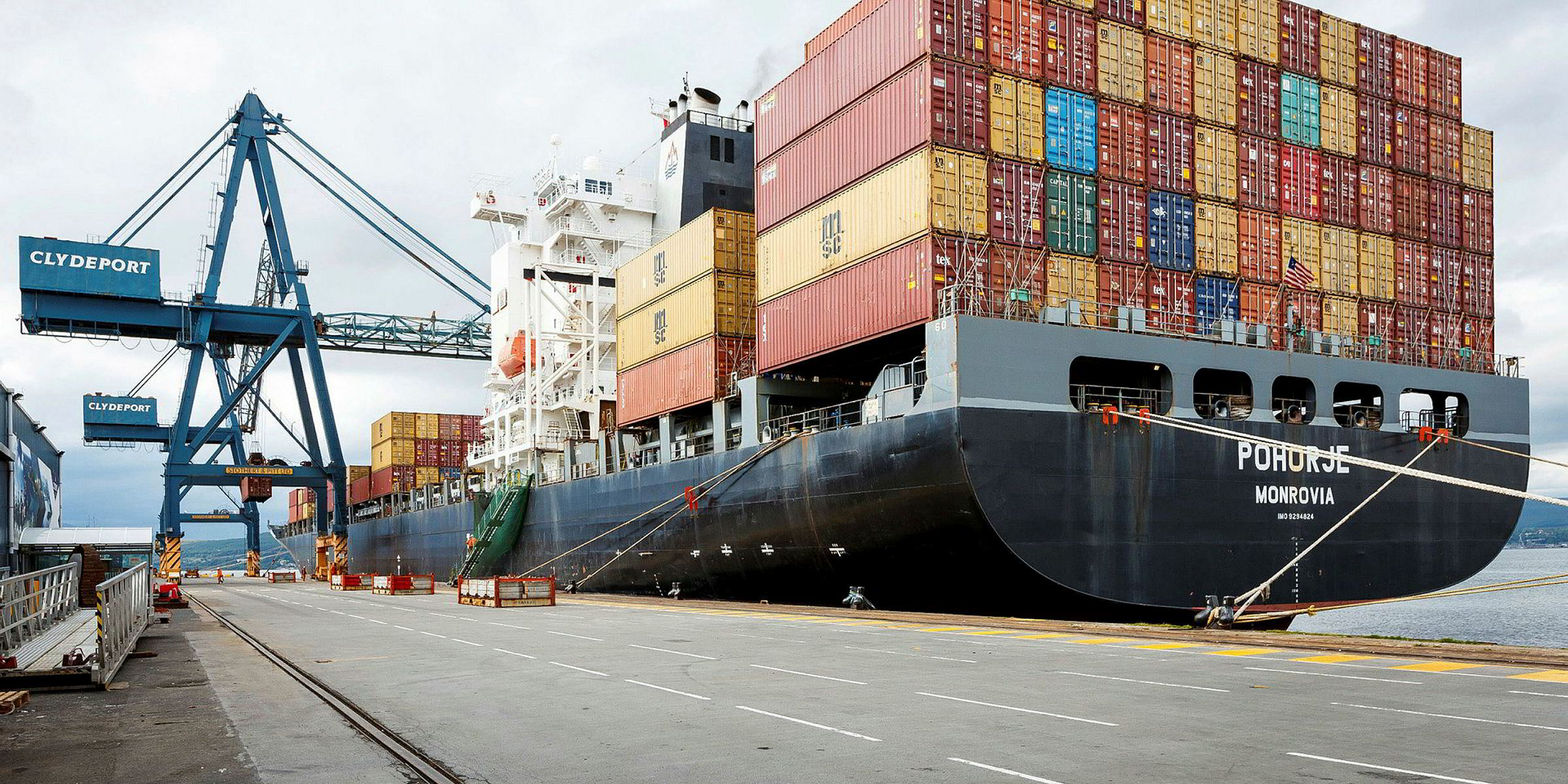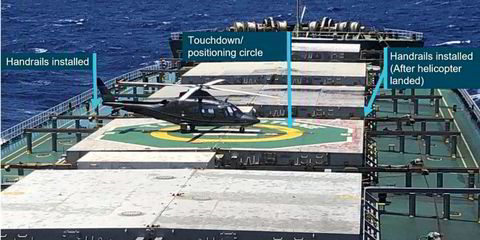Container freight rates are tumbling on major east-west routes. That is no surprise as demand typically drops after the Chinese New Year holidays, prior to which shippers rush to fulfil shipments ahead of factory shutdowns.
But the jury is out on the bigger question: How much further do rates have left to fall?
Box rates out of Asia to Europe and the US fell in double-digits in the week following the Lunar New Year, suggesting they still have some way to go if they are to match drops of between 25% and 50% in the first four months of 2017.
With demand in global economies improving, the extent to which freight rates may decline could depend on how liner operators manage the supply-side impact of containership deliveries from shipyards.
Fearnley Securities estimates that around 285,000 teu of deliveries were made in the first two months.
A similar amount is expected delivered in the coming two months, equating to around 2.7% fleet growth. That is already impacting on freight rates between Asia and North Europe.
These have dropped from a high of $1,740 per 40-foot container (feu) on 22 February to $1,538 per feu on 8 March, according to the World Container Index (WCI).
Falling rates have been blamed for some liner operators cancelling plans for a series of rate hikes from 1 March. The pressure on rates could mean that further general rate increases scheduled for mid-March look unlikely to succeed.
Transpacific lag
Rates in the transpacific also lag behind 2017 levels, with those between Shanghai and US East Coast dropping $258 per feu to $2,460 per feu, says WCI.
The Freightos online booking site suggests that last year's marketplace was still impacted by the bankruptcy of South Korean carrier Hanjin Shipping.
“If the Hanjin collapse was still affecting prices this time last year, expect prices to fall less in the next two to three months. If not, expect prices to plummet,” it says.
Other analysts remain relatively sanguine. That includes Drewry, which expects full-year freight rates to be slightly up on last year.
“While there is a lot of potential new tonnage due in 2018, we expect carriers to suppress their impact with more deferrals, scrapping and, if necessary, by reactivating the idle fleet,” it says. “Moreover, void sailings will remain a key part of the arsenal to prevent trade load factors falling precipitously in any given month.”
While there is a lot of potential new tonnage due in 2018, we expect carriers to suppress their impact with more deferrals, scrapping and, if necessary, by reactivating the idle fleet
Alphaliner notes that during the Lunar New Year the idle fleet rose to around 1.4%, or 89 ships of 308,000 teu.
That number is expected to fall in April, thanks to additional demand as new services are launched.
Clarksonsestimates that the global container trade will remain relatively robust at 5% growth this year and 4.8% in 2019.
So the key remains the pace at which new tonnage is delivered from yards. Alphaliner expects such deliveries to pick up soon, with more than 400,000 teu of capacity due in the next month.
Today’s containership orderbook is equivalent to 13% of the fleet in capacity terms, close to the lowest level on record, says Clarksons.
Despite this, a significant 1.7 million teu of capacity has been scheduled for delivery this year — enough to equal the record year of deliveries in 2015.
Slippage or cancellation of deliveries this year is expected to knock that down to 1.2 million teu, slightly higher than in 2017 but still subdued compared to 2013 to 2015.
Clarksonsargues that non-delivery in 2018 would have to practically halve from 27% to 16% of the boxship orderbook before fleet growth would outstrip growth in demand.
“The limited overall orderbook should help to control supply-side pressure as a whole in the coming years,” the brokerage says.




